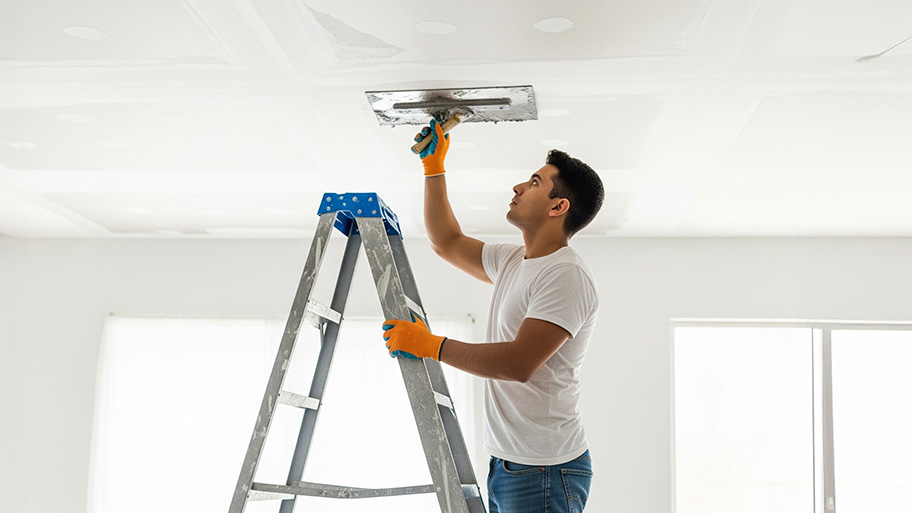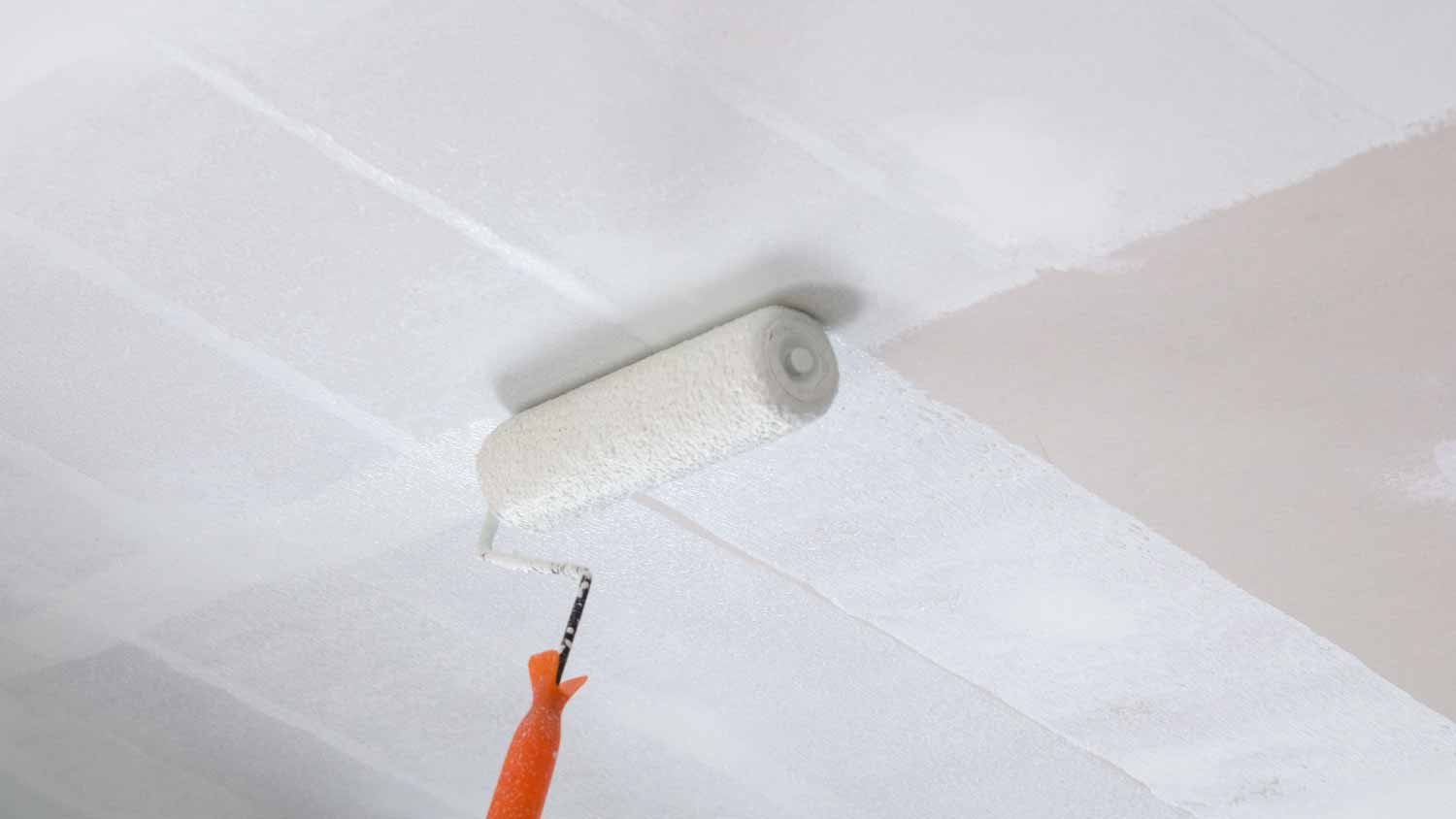
Popcorn ceiling removal costs depend on the size of your ceiling and any additional services like asbestos removal and resurfacing. Learn all the costs here.
With a little patience and some elbow grease, you can tackle this DIY


Learning how to plaster a wall is a skill that will enable you to transform any space, providing a smooth, durable, and aesthetically pleasing surface. While it might seem daunting at first, plastering is a craft that can be mastered with patience, practice, and the right techniques. In this comprehensive guide, we will walk you through the step-by-step process of plastering a wall, from preparing the surface to achieving a flawless finish.
Before diving into the practical steps, it's essential to understand the fundamental concepts of plastering. Plaster is a mixture of sand, cement, and water that forms a paste-like substance used to cover walls and ceilings. It not only provides a smooth surface but also strengthens and protects the underlying structure. There are various types of plaster you can choose from, including gypsum plaster and lime plaster, each with unique characteristics and applications.
Choosing the appropriate plaster type is pivotal for a successful project. Each type–whether it's gypsum plaster, known for its flexibility, or lime plaster, valued for its breathability–caters to specific needs. Gypsum plaster, ideal for indoor spaces due to its quick drying and smooth finish, contrasts with the natural, eco-friendly lime plaster, favored for its durability and resistance to moisture. Understanding these distinctions ensures that the plaster not only adheres effectively but also endures environmental factors, delivering a high-quality, long-lasting result.
Tailoring the plaster choice to your project's requirements sets the foundation for exceptional outcomes, both in terms of aesthetics and structural integrity. If you aren’t confident in which type of plaster is right for your project, you can always consult a plaster repair specialist near you for expert insight.

The key to a flawless plastering job lies in the preparation of the surface. Start by removing any loose paint, wallpaper, or old plaster from the wall. You can repair any cracks or holes with a suitable filler and sand the surface to create a smooth base. It's essential to ensure that the wall is clean, dry, and free of dust and debris before applying the plaster. Additionally, applying a primer or bonding agent helps the plaster adhere better to the surface, ensuring a long-lasting finish.

Mixing plaster is an art in itself. Follow the manufacturer's instructions to create the perfect plaster consistency. Usually, you'll combine plaster powder with water in a clean bucket, stirring continuously to avoid lumps. Use a mixing paddle attached to a power drill for efficient mixing. Let the mixture rest for a few minutes before giving it a final stir. The plaster should have a creamy, lump-free texture, ready for application.

Begin by dampening the wall with water using a spray bottle. This prevents the wall from absorbing moisture from the plaster too quickly, ensuring a strong bond. With a steel trowel, apply the first layer of plaster evenly across the wall, maintaining a consistent thickness. Use a straight edge or spirit level to ensure the surface is flat and level. Score the plaster with a scratch comb or a scarifier to provide a rough texture, allowing the next layers to adhere securely.

Once the base coat is dry and firm to the touch, dampen the surface again with water. Prepare the finish coat of plaster, which is usually smoother and more refined than the base coat. Apply it evenly over the base coat, using a steel trowel in a sweeping motion. Keep the trowel at a slight angle and work from the bottom to the top, smoothing the plaster as you go. Use long, sweeping strokes to achieve a uniform texture. Constantly dampen the trowel to prevent it from sticking to the plaster, ensuring a smooth and polished finish.
Skip this step if you are going for a super smooth look. If you prefer a textured finish, various techniques can be used to add character to your plastered wall. Popular options include sponge texturing, swirls, stippling, or using a textured roller. Experiment with different methods on a practice board to find the texture that best suits your taste. Applying texture can elevate the visual appeal of your wall, creating depth and interest.

Allow the plaster to dry completely, as per the manufacturer's recommendations. This curing period is crucial for the plaster to set and achieve its maximum strength. During this time, avoid touching or disturbing the surface. Once the plaster is fully cured, you can polish it to enhance its smoothness further. Use a fine-grit sandpaper or a plasterer's float to gently rub the surface, creating a polished effect. Be careful not to oversand, as it can damage the texture and even out the surface irregularities.

After polishing, you can opt to prime the plastered surface before painting. Priming helps the paint adhere better and provides a uniform base for the final coat. Choose a suitable primer for plastered walls and apply it evenly using a paintbrush or roller. Once the primer is dry, you can paint the wall in your desired color, adding the final touch to your beautifully plastered surface.
Tackling a wall plastering project on your own would cost approximately $194 for tools and supplies. In contrast, hiring a professional plasterer typically costs $2 to $10 per square foot, considering both material and labor. The total expense for professional services greatly depends on the size of the project.
While DIY offers cost savings upfront, hiring a professional ensures expertise, quality, and often a quicker completion. It's crucial to weigh these factors against your budget, time, and skill level when deciding between DIY and professional plastering for your specific project. The type of plaster you choose (like venetian plaster) can also impact your spending.
From average costs to expert advice, get all the answers you need to get your job done.

Popcorn ceiling removal costs depend on the size of your ceiling and any additional services like asbestos removal and resurfacing. Learn all the costs here.

A ceiling repair averages about $1,000, but multiple factors affect this number. Learn more about creating an accurate ceiling repair cost estimate with our tips.

Venetian plaster can add depth and texture to your aesthetic. Learn how much Venetian plaster costs based on factors like square footage and whether you hire a pro to help.

You can find plaster walls in a lot of older homes. What’s behind these walls—whether that’s lath or calcimine—can have an impact on how long they last. Finding out the age of your house can help you determine what you’re dealing with.

Applying the right amount of mist coat extends the life of your paint. But how many times should you mist coat new plaster? Find out with this guide.

Whether you want to boost the aesthetics of a room or add more privacy, use this guide to learn how to hang ceiling-mounted curtains securely.